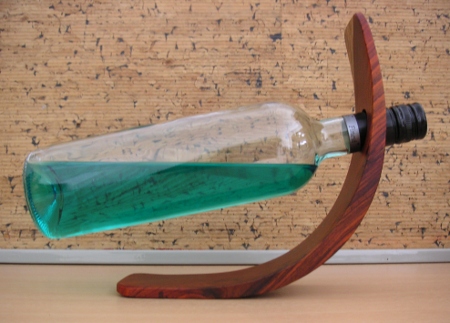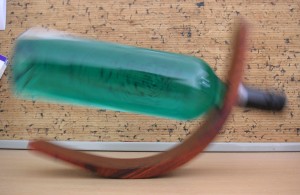My parents brought me back this wine holder from their most recent holiday.
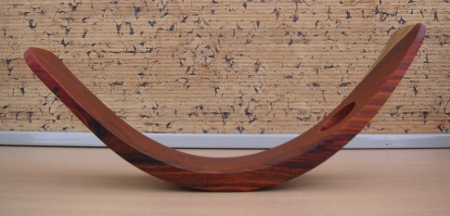
It doesn’t look much like a wine holder until you insert a bottle; whereupon it magically “stands up”.
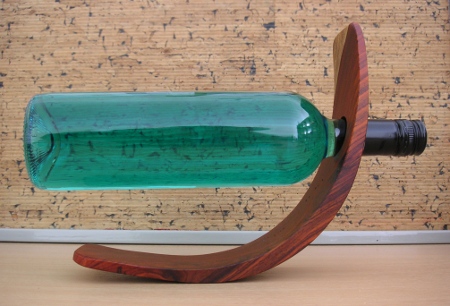
An object balances when its centre of mass is above its base. The base of the holder can be any point along the curved edge; the curved shape allows it to pivot freely. The holder balances when the centre of mass is directly above the pivot.
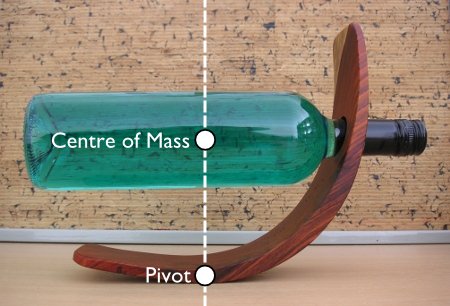
If the centre of mass is to the left of the pivot the holder rotates to move the the centre of mass right (anticlockwise); if it’s to the right then the holder moves the centre of mass to the left (clockwise).
An object free to rotate will rotate around its centre of mass. In the photograph below (click to enlarge) you can see where the centre of mass is – it hasn’t rotated and therefore isn’t blurred.
An empty bottle works just as well. A bottle uniformly full of air and a bottle uniformly full of water have almost the same centres of mass.
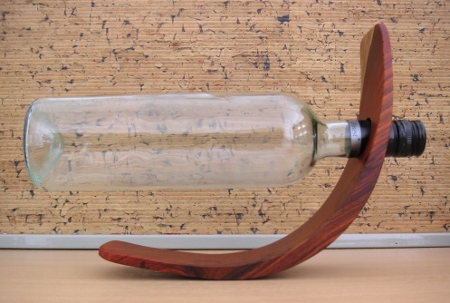
Shifting the neck of the bottle in and out of the holder shows what effect moving the centre of mass has on the balance point. With the neck all the way in the centre of mass is moved to the right and the holder balances further to the right; the opposite is true when the neck is all the way out, moving the centre of mass to the left.
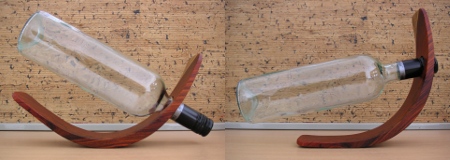
A half-full bottle has a very different centre of mass; the ability of the water to move around causes the centre of mass to move around. In the photograph below the water has settled to the bottom of the bottle, moving the centre of mass towards the left as in the photograph above right.
